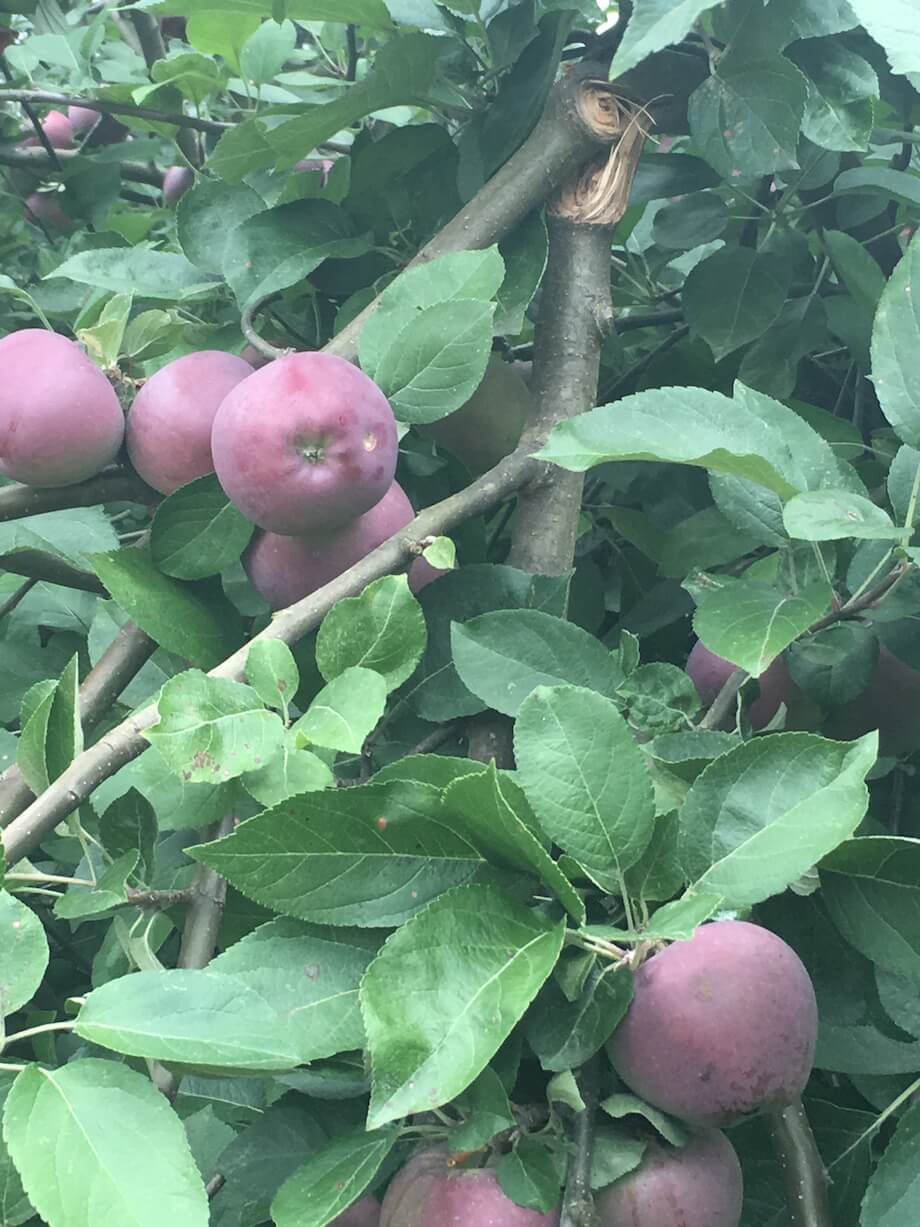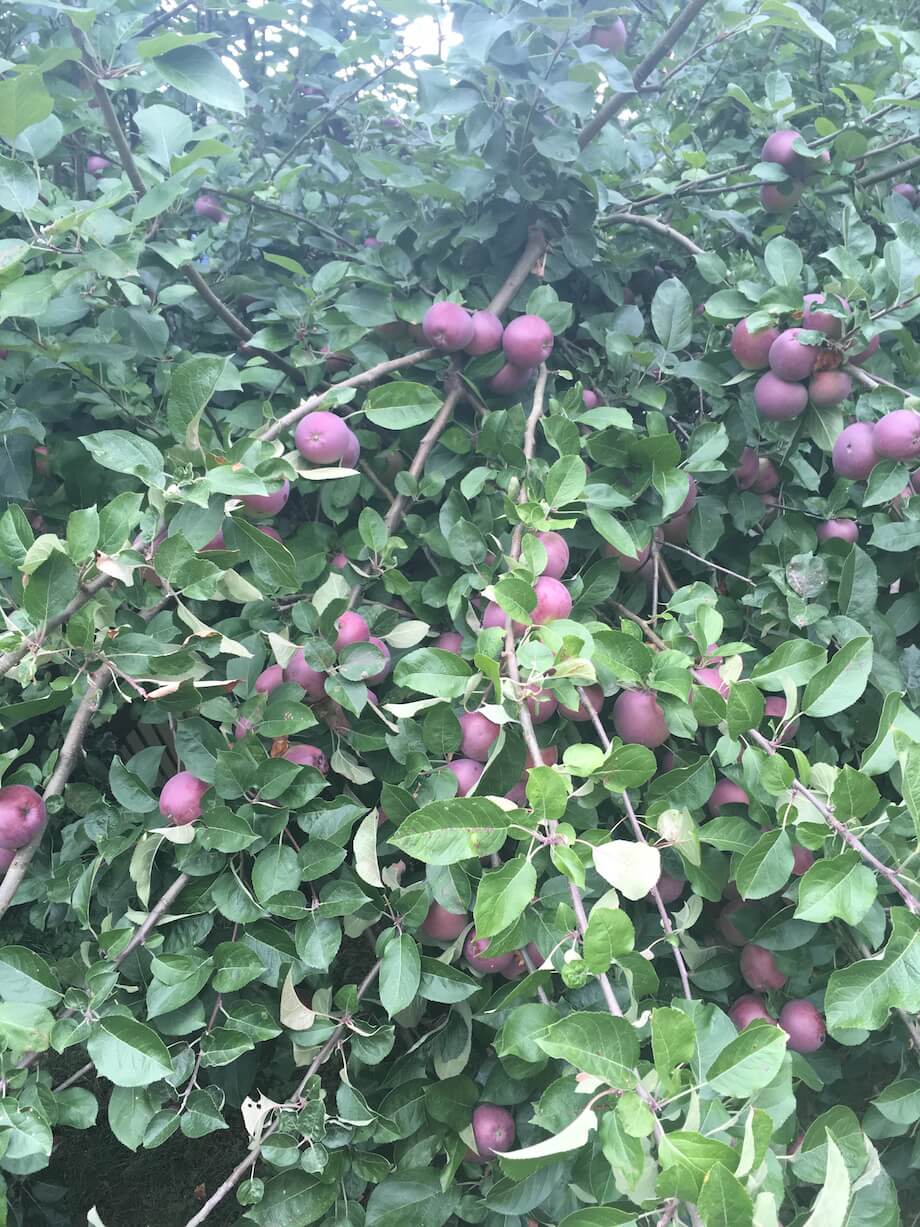My Dad’s running a gardening experiment in his backyard. What happens if you let an apple tree fully fruit, instead of thinning the smaller fruits in the spring?
This is what happens:


Yes, the apple crop broke Dad’s tree. He didn’t launch this investigation on purpose—he’s had some health problems lately. I’m sure, if he’d been at full health, he have thinned the apples to just one per cluster, like horticulturists recommend. (This would also have been a good time for some codling moth prevention.)
Thinning prevents the fractured limb my Dad’s tree suffered, but also gets you get better fruit. Fruits that don’t have to compete for resources are larger and sweeter.
Sometimes, apple trees shed on their own to avoid breakage. Apple trees drop fruit a few times during the year. First, in early spring, fruits that didn’t get pollinated drop off the tree. The June Drop is the big one, when all the fruits are competing for the same resources. This competition’s losers end up as earthworm feed.
Dad’s tree did drop dozens of apples—I know, I’m the one who raked them up and filled a wheelbarrow of them—but Seattle’s unseasonably warm spring must have goosed apple production. Result: One fractured limb.
Besides the broken wing, Dad’s apple harvest is fantastic. The apples aren’t as large as normal, but they’re still sweet enough to eat. Once I raked up the fallen apples, I plucked about 20 from the tree to take home. And, while my wife ignored broad hints about fresh-baked apple pie, I’m enjoying the apples as snacks and as part of my complete breakfast.
And, as you can see, I’ll can get plenty of refills.

All photos by Seth Kolloen









































Leave a Reply